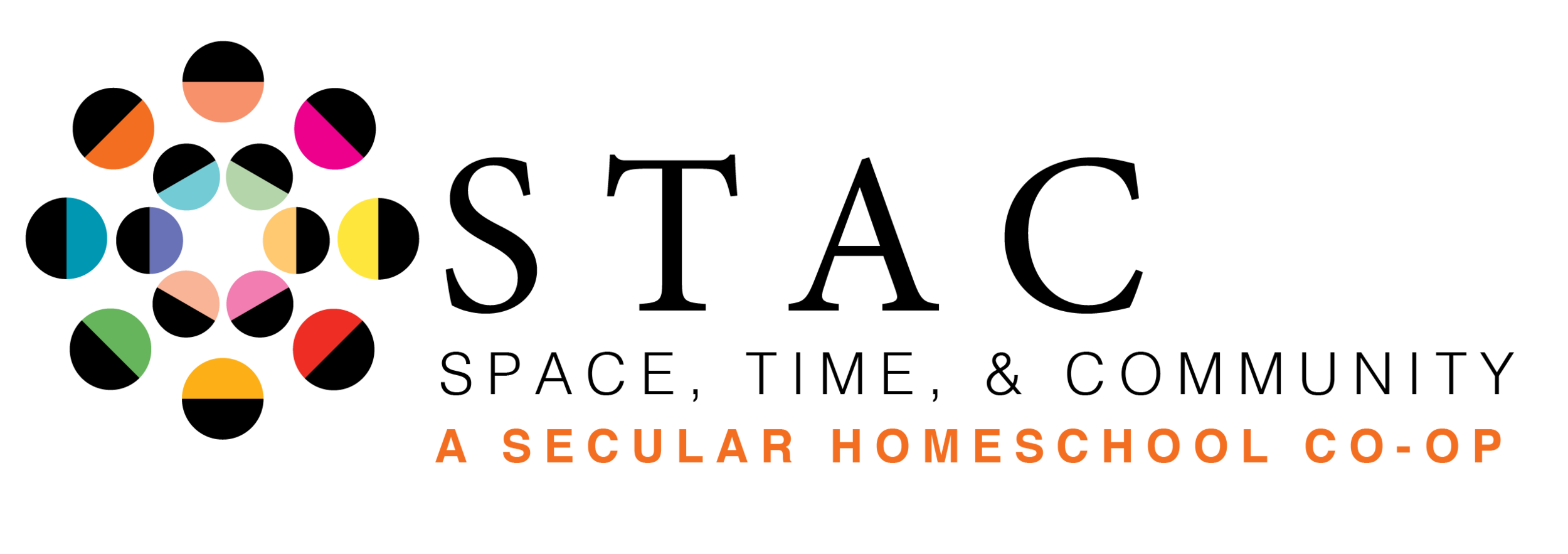At STAC, we do art!
At STAC, instructors offer art classes for kids from preschool age through high school. All students are welcome, no matter their level of experience. This month, we hear from Tiffany Ard and Libby Mathis about why they teach art, and why they think it is important.
Tiffany: I teach high school art and a variety of critical thinking and science classes. I’m also on the board this year, but apart from that I try to help wherever I can and most importantly be a good listener and friend to the kids.
Libby: I am currently teaching two art classes at STAC. Little Artists is for ages 4-7 and Artistic Creations is for ages 8-12. I also teach a STEAM class for ages 7-10. In addition to teaching, I am a member of the STAC board in charge of Community Building as well as a co-coordinator of our Friday afternoon social time (PCL).
Why do you see value in offering art instruction to all students?
Tiffany: Art changes your brain. It helps make all kinds of connections in really cool ways.
Libby: Art is important for everyone. WIth the little kids, they are all natural artists and exposing them to different art materials helps them explore their creativity. With the older students, continued exposure to art experiences can help them avoid the “I’m not an artist” stage where they stop creating because they don’t feel confident in their skills.
What do students get out of art, other than how to draw?
Tiffany: A lot of kids find comfort in making art. Especially during adolescence when life can be really intense and hard, art can be a safe place and a source of comfort. I hope they also learn to use art as a way of expressing their point of view. Kids right now have a lot of anxiety and frustration about what’s happening in the world around them — they feel helpless. Well through art you always have a voice. What do you want to say?
Libby: Art helps with fine motor skills, creative problem solving, critical thinking, observational skills, risk taking, and the list goes on. Involvement in art classes can boost academic skills in other classes.
You both incorporate art history and artist history into your classes. Why?
Tiffany: A lot of people feel intimidated by museums and art galleries, like understanding art is for other people who “get it.” I tell my students that art is a conversation taking place over thousands of years. I want them to know that they have access to that conversation. We try to understand what voices from the past are saying and connect it to our lives today.
Libby: Art history is important as it can give us a peek into what was happening in the wider world during past times. My students may not immediately make connections between the artwork and events in history, but as they learn more it helps the pieces fall into place. In addition, studying artworks from the past can inspire their own creativity. I particularly like to highlight female artists and artists of color, so that all my students can picture themselves as an artist if that is what they are passionate about.
How do you incorporate art into your daily life?
Tiffany: Oh gosh, my life is a rolling explosion of art supply experiments gone wrong. I also try to stop and notice beauty and texture of everyday things. My kids have taken on my habits, so we have a lot of conversations about light and shadows and other things around us.
Libby: With three kids, I don’t always have time to sit down and paint a picture. I try to find small ways to be creative everyday. I enjoy taking photos with my phone, that is something I can do almost anytime. I also doodle and sketch on scraps of paper. Having a dedicated art space in my basement helps me fit bigger projects into the bits of free time I have during the day.
What do you love about STAC?
Tiffany: I love the kids so freaking much. My favorite thing is the different perspectives we get by being inclusive and by encouraging all ages to work and play together. Some really awesome, unexpected stuff emerges when you empower kids and then stand back a little.
Libby: I love the sense of community, the connections that my family has made, and the wide variety of awesome classes available.
